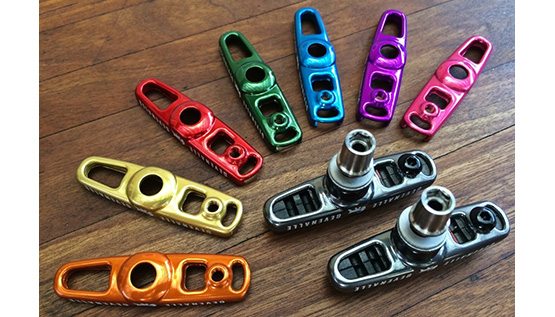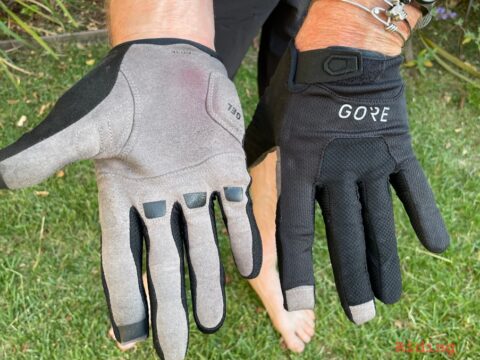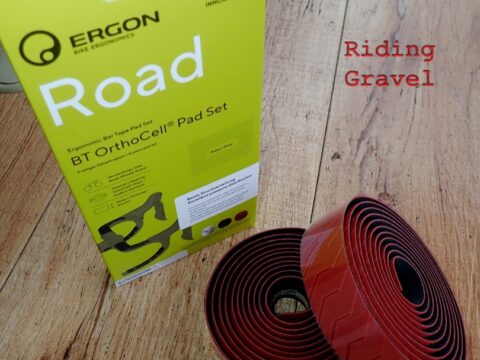Kenda Flintridge Pro Tires: Checkpoint- by Guitar Ted
The Spring we were supposedly going to have was a fast one and here we are in Summer already. Time to update this review with the latest views on this classic gravel tire. If you seem to think you’ve seen a Flintridge review here before, you may have and all that is explained in the “Getting Rolling” post here. As mentioned in that previous piece we will also be hearing from MG, our contributor in Nebraska, about this tire. Let’s dig in……

Tubeless Performance: The views I had on the difficulties I experienced with the ability of the Flintridge Pro tires to be set up tubeless set off a storm in the comments and I heard from many riders regarding the tire and what rims were and were not working well in regard to tubeless set up. Our contributor, MG, also had some comments and his experience was much better than mine. He reported an easy set up, as many readers did. Digging in a little further, it seems that the vast majority of those commenting, and also with MG, were using Stan’s rims of some sort with the Flintridge Pro.
This makes sense in that Stan’s rims have a bigger bead seat diameter than most tubeless rims. This makes the Flintridge Pro fit tight enough to allow it to make a good initial seal when setting up the tire tubeless. The Irwin Cycling wheels, the Arlo GX 27’s on test here, are another rim that seems to play well with the Flintridge Pro. Besides this, the Flintridge Pro seems to have very good air retention characteristics and that is impressive.

Ride Performance: The Flintridge Pro has a quirky personality when it comes to ride feel. The puncture protection belts and stiff feeling casing would lead one to believe that this tire has a higher rolling resistance. That I confirmed in my roll down test. On the course I use, which is a steep, paved hill leading to a primitive two track road, I found the Flintridge Pro was at the bottom of the class when it came to roll out. This can be felt while riding paved surfaces as well. It has a “draggy” feel to it, and I find the tire to be unpleasant to ride on pavement.
That high resistance ride feel was absent on gravel, however, and for whatever reason, this tire rolls just fine on loose gravel. In fact, the rougher it gets the better the tire performs. Perhaps this is owed to the tire being designed for Kansas’ Flint Hills region, which has some pretty rough gravel. The dual personality of this tire manifests itself in a smooth, composed ride on gravel. There is a slight bit of lateral instability on the loosest, deepest gravel, but that is par for the course. The Flintridge Pro is actually a pretty impressive tire on crushed rock.
Our tester/contributor, MG, also has been testing the 40mm Flintridge Pro along with its 35mm sibling. MG reports liking the 40 a bit more saying, “Overall, they’re pretty good. I like their rolling performance.” He also has matched up the Flintridge pro with a WTB Riddler. MG comes from a MTB background where mixing and matching tread patterns has been a tradition for years. “The 40 (Flintridge Pro) is a good tire front or rear, but I prefer it on the rear, paired with something like a WTB Riddler 45mm in the front.” MG says it is this combo which he will race on the Lauf True Grit which he is reviewing for us. (See his latest post here) As stated, MG is also using the 35mm Flintridge Pro. He has these on a Singular Kite and stated, “…..they are noticeably faster and lighter, but also harsher riding.” As for nits, MG said he wasn’t as fond of the cornering prowess of the Flintridge Pro tires as he is with other tires with a more pronounced edge tread. The Flintridge’s edge knobs are quite low. MG also said that inconsistencies in the way the tread is applied to the casing appear as wobbles on all the examples he has in to test, both the 40’s and 35’s. I noted a slight inconsistency on one of my tires as well. Performance of the tires does not seem to be affected adversely though. More of a cosmetic annoyance here. Finally, MG reported back that his 35’s measure out at 38mm and his 40’s as 43mm tires. Something to keep in mind if your clearances are minimal.
So Far…… The Flintridge Pro is a tire made to withstand some nasty gravel and paved road gremlins, but with that protection comes a price. In this case, a possibility for a very difficult mounting process, and high rolling resistance on pavement. While hard surface riding suffers from a higher rolling resistance feel, when you hit the rough stuff this tire comes alive. It rides with an uncanny smoothness then that belies its paved riding characteristics. The Flintridge does mount up 2-3mm wider than stated on the hot patch, so be careful if clearances are tight on your bike.
Tread wobble could be an issue with this tire, but it doesn’t seem to affect performance for us. The tread has a good amount of traction on dry dirt and performs in an average sense on gravel. Just what we expect from a tire in this class. Mud is not this tires friend. That said, if you have rough to severe gravel or rock on much of your routes, the Flintridge Pro is up to the task there.
Stay tuned for our final verdict on the Flintridge Pro tires coming up later this Summer in our “At The Finish” post.
Note: Kenda Tires sent over the Flintridge Pro tires at no charge for test and review. We were not paid, nor bribed for this review and we strive to give our honest thoughts and opinions throughout.











I’ve noticed a slight off-center tread on some of mine too, but like you guys never enough to kill a ride.
Something that came up for me with these lately is keeping the bead seated when deflated on a hookless rim. Could just be this rim design (Industry Nine) and I need to check them again on some other rims in the garage to see how they do in that regard.
@Kevin Collings- I think the stiff, under tread belt is the reason you experience that. It makes the side walls collapse toward the center since the tire wants to fold in on itself.
are you guys testing the KSCT or TR version of this tire? From the website it looks like the TR (tubeless race) is significantly lighter than the KSCT. By their description it would seem that this is related to making it even more tubeless compatible, and not adding any flat protection or armoring.
“KENDA SCT is the modification of existing Kenda tire technologies making them now compatible with fluid based tubeless conversion systems.”
@DT- The side wall says “DTC” STC”. That said, there is clearly a belt of some sort under the tread. It is very stiff.
Ted, I’m one of those who disagreed with your mounting issues and yes I use Stans grail wheels. But I also must strongly disagree with your take on slow rolling on pave. I have found it to be just the opposite. The near continuous center tread rolls very fast. And I’ve tried about 5 different gravel tires. But rolling resistance is very subjective anyway, and it seems you give too much credit to the accuracy of that subjective feel. Also, this tire has very very long tread life – literally more than twice that of the Clement MSO. The closely spaced knobs add great puncture resistance to the outstanding puncture resistant casing. The casing softens up after a few rides. I honestly believe you assumed the casing would cause rolling resistance, and then experienced a self fulfilling prophecy. It’s an outstanding tire in every way IMO.
@Jimmy Smith- First of all, nice cut and paste from your comment on our Facebook page. I will respond here likewise: ” Hmm….. Roll out test doesn’t lie, so I am afraid it doesn’t matter what my perceived per-conceived notions were. I also have ridden a lot of tires, so having several sets to A/B against to weed out any of my false perceptions helps. That said, if you like them a lot, don’t mind me. What is best for you only you can determine. Ride on!”
Late comment for the records: I had a very hard time seating my ones, they were super loose on my generic rims. I ended up using the air gun on the air compressor with the valve core removed, I just placed the nozzle right into the valve and a hell of a lot more air rushed in than through the tyre inflator tool.